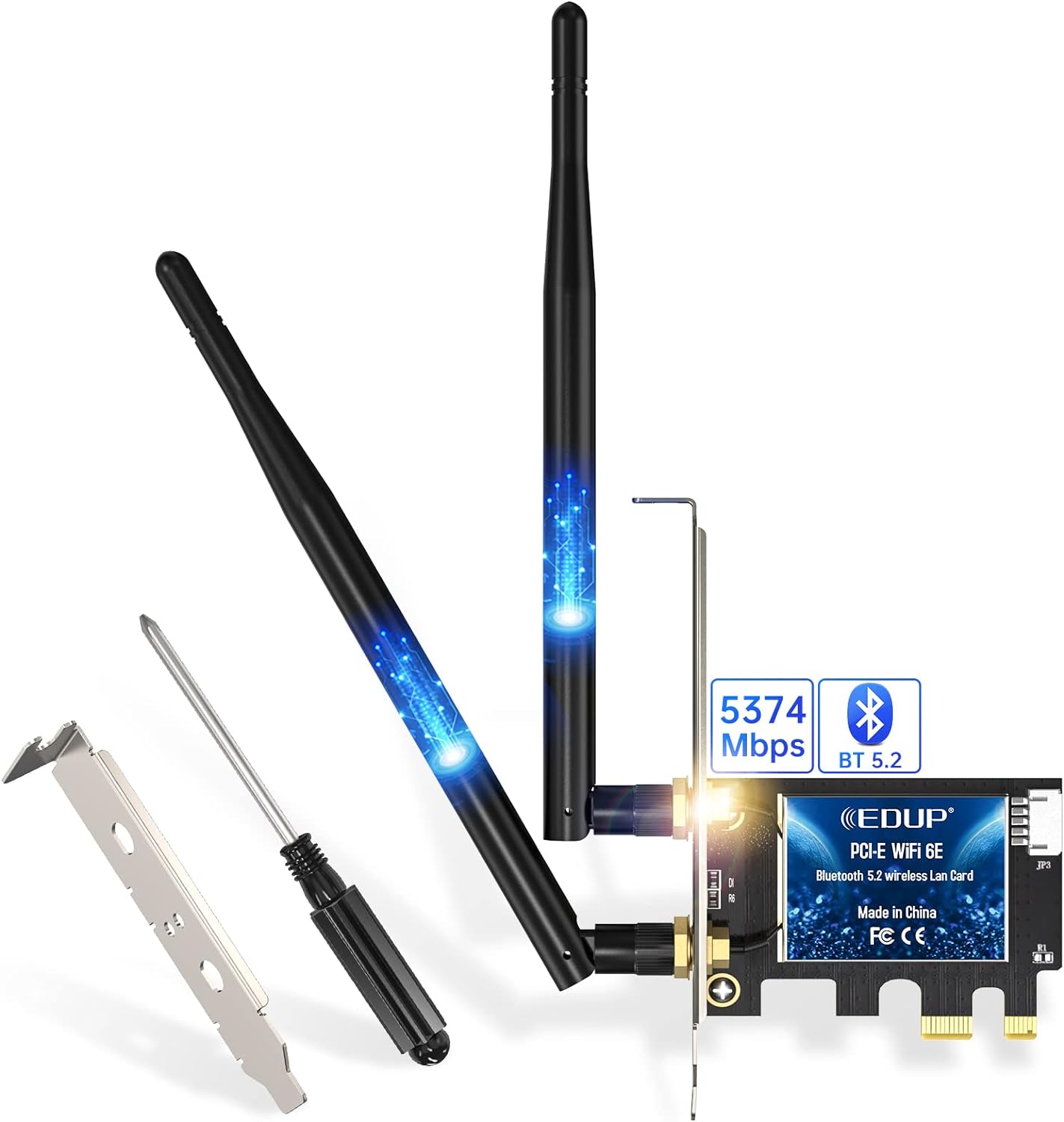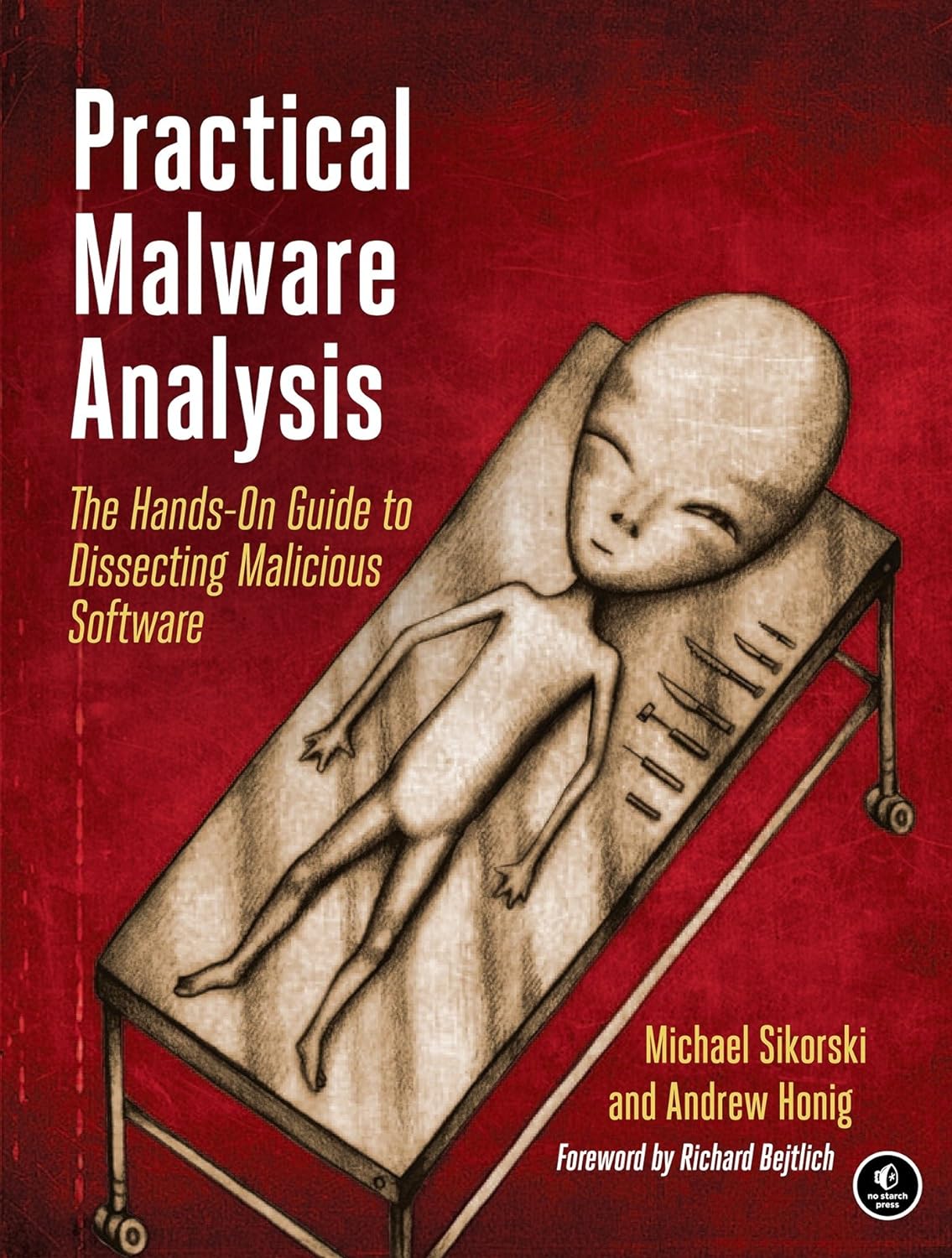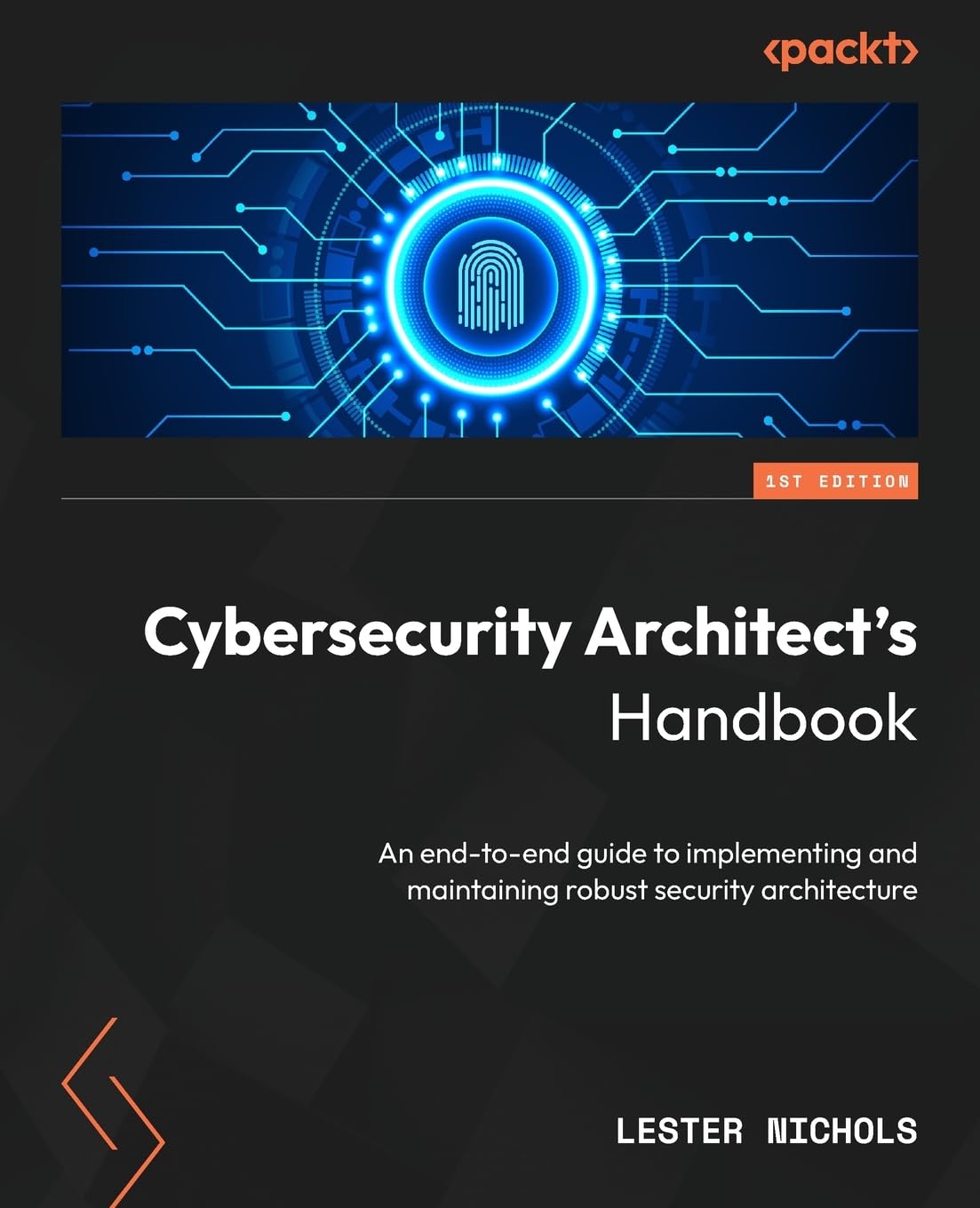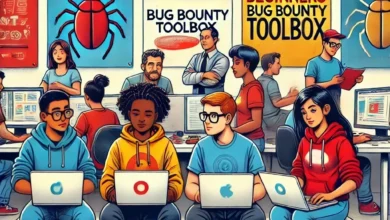
In an era dominated by the digital revolution, where every click, swipe, and tap can unveil a hidden world of vulnerabilities, the role of bug bounty hunters has never been more paramount. They aren’t merely tech enthusiasts but the vanguard of our online sanctuaries, navigating the intricate webs of the digital realm to uncover weak spots. Yet, unearthing these vulnerabilities is just one facet of the challenge. The real prowess lies in the art of articulation—in meticulously crafting bug bounty reports that don’t just highlight the glitches but captivate the attention of the gatekeepers, ensuring swift rectifications.
As the next generation forges deeper into the digital frontier, their need for robust cybersecurity measures grows exponentially. This underscores the importance of honing one’s reporting skills to resonate with the digital generation’s sensibilities. The essence of a successful bug bounty report lies in its ability to communicate complex vulnerabilities in an accessible and compelling manner, acting as a linchpin between discovery and resolution.
Mastering Bug Bounty Reports for the Digital Generation is more than just a guide—it’s an essential compendium for all who seek to transform their technical discoveries into powerful narratives. As you embark on this journey, you’ll unlock the secrets to creating stellar reports, boosting not only the acceptance rates of your findings but also solidifying your status as a trailblazer in the realm of bug bounty hunting.
Remember, in a world teeming with code and digital complexities, clarity is your most potent weapon. Let’s delve deep, refining our skills and ensuring that every vulnerability uncovered doesn’t just get reported but gets the immediate attention and resolution it deserves. Welcome to the mastery of bug bounty reporting, tailored for the discerning digital generation.
Forging an Irresistible Headline | Your Report’s Crowning Glory
In the expansive world of cybersecurity, the title of your bug bounty report is your entry ticket into the spotlight. It’s the beacon that will either draw readers into your narrative or let it be lost amidst a sea of mundane reports. The digital generation, characterized by its short attention span, demands precise yet compelling titles that immediately resonate with the issue’s severity and relevance.
Why It Matters: A concise, specific title sets the tone, highlighting the gravity of the vulnerability and establishing credibility from the get-go. With a well-chosen title, you also aid security teams in prioritizing issues, especially in large organizations where dozens or even hundreds of reports may be submitted daily.
Tools & Techniques: Consider utilizing keyword optimization tools such as Google’s Keyword Planner or Moz’s Keyword Explorer to find words that resonate most with the security community. Such tools can give insights into terms and phrases that are both relevant and frequently searched, ensuring your report gets the attention it deserves.
Example Approach:
- Specificity is King: Instead of generic titles like SQL Injection Found, emphasize the affected module or feature, like “SQL Injection in Payment Gateway – User Credit Data at Risk.”
- Severity Indicators: Using words that suggest the severity can also be effective. Titles such as “Critical XSS Vulnerability in User Settings” will likely garner prompt attention.
- Avoid Jargon Overload: While specificity is crucial, bombarding the title with too many technical terms can be off-putting for non-technical stakeholders. Balance is key.
- Engage with Action Words: Using verbs can make your title more dynamic. For instance, “Exposed: Admin Panel Access Through Session Hijacking” sounds more compelling than just “Session Hijacking Issue.”
In essence, the art of crafting a title for your bug bounty report melds precision with allure. In the digital era, where information overload is a genuine concern, standing out with a well-phrased title is half the battle won.
Crafting the Perfect Digital Arena
The description of your bug bounty report serves as the bedrock upon which your entire narrative is built. As you communicate with an audience embracing the digital age’s rapid pace, setting a clear context becomes paramount. This section should act as a lens, focusing the reader’s attention on the vulnerability’s essence, its context, and its potential implications.
Why It Matters: The digital generation craves clarity. They desire content that is straight to the point yet comprehensive. Your description provides this clarity, ensuring that the reader doesn’t meander in ambiguity but grasps the crux of the vulnerability you’ve uncovered.
Tools & Techniques: Leverage mind-mapping tools like MindMeister or XMind to structure your thoughts before delving into the description. These tools can help you lay out the vulnerability’s context, the steps to reproduce it, and its potential implications in a coherent and logical manner.
For those handling a plethora of data points, note-taking applications such as Notion or Evernote can be beneficial. These platforms allow you to categorize, tag, and link related pieces of information, ensuring you have all relevant data at your fingertips when crafting the description.
Example Approach:
- Ground with Context: Start by providing a brief overview of the application, its purpose, and the specific module or feature where the vulnerability resides. E.g., “The XYZ application, designed for online shopping, exhibited a flaw within its checkout module.”
- Highlight with Standards: Reference well-known standards like OWASP’s Top Ten or specific CVE entries to provide a benchmark for the severity and relevance of your discovery. This not only adds credibility but also makes your report more accessible to stakeholders who may rely on these standards.
- Incorporate Visuals: Embed annotated screenshots or short video clips. Visual aids can be compelling and are often more efficient at conveying complex information. Tools such as Greenshot or Loom are invaluable in this respect.
- Use Real-World Analogies: The digital generation resonates with content that relates to their experiences. Analogies, when used aptly, can bridge the gap between complex technicalities and relatable narratives. For instance, likening an unprotected database to “an unlocked treasure chest in the middle of a bustling market” can paint a vivid picture of the risk involved.
- Maintain a Consistent Flow: Ensure that your description follows a logical progression. Start with the broader context, hone in on the vulnerability specifics, and then discuss potential implications. This flow ensures that even readers unfamiliar with the application’s nuances can follow along and grasp the core issue.
Crafting a compelling description for your bug bounty report is akin to painting a digital portrait. Each brushstroke, each shade, and each nuance should work cohesively, producing a vivid picture of the vulnerability and its ramifications. Remember, it’s this clarity and depth that will set the stage for the rest of your report.
Recreating the Challenge | The Ultimate Digital Blueprint
Reproducing a vulnerability is the heart and soul of your bug bounty report. It validates your claim, demonstrating the vulnerability’s existence and allowing security teams to experience it firsthand. This section should read like a recipe, where each step, no matter how minuscule, is laid out in an easily digestible manner, ensuring that even a layperson could replicate the issue.
Why It Matters: Digital natives appreciate transparency and replicability. A clear, step-by-step guide to reproducing the issue not only fosters trust but also ensures that your report stands out in a sea of vague claims. It’s not enough to merely state the problem; you need to guide the reader through it.
Tools & Techniques: For a more dynamic experience, use screen recording tools like OBS Studio or Loom. These allow you to capture the vulnerability in action, providing a real-time visual companion to your written steps.
If your vulnerability involves complex data packets or network interactions, tools like Wireshark or Burp Suite can capture and display this data. Sharing logs, packets, or even request-response sequences can add depth to your reproduction steps.
Example Approach:
- Begin with Basics: Start from ground zero. If it involves logging into an application, mention it. If specific user roles (like admin or guest) are pivotal for the vulnerability, specify that.
- Be Sequential and Specific: Use a clear sequence, maybe even-numbered steps. E.g., “1. Open the XYZ application. 2. Navigate to the ‘Settings’ tab. 3. Enter the following payload in the ‘Username’ field…”
- Embed Media: Accompany complex steps with screenshots, GIFs, or short video clips. Annotated visuals can be particularly impactful. Tools like Snagit or Gyazo can assist in capturing and annotating these snippets.
- Highlight Expected Outcomes: After certain pivotal steps, mention the expected outcome. This ensures that the reader knows they’re on the right track. For instance, “After executing the above payload, you should be redirected to an unauthorized admin panel.”
- Offer Alternative Scenarios: Sometimes, vulnerabilities might behave differently based on browsers, devices, or other factors. If you’re aware of such nuances, include them. E.g., “Note: On Safari, instead of a redirection, you might see an error. However, the data leak still occurs, as evidenced by…”
- Link to Tools: If using specific tools or plugins (like a particular payload encoder or a proxy tool), provide links or references. This ensures that the reader has everything they need to recreate the issue.
Bonus Tip: While crafting this section, imagine you’re guiding someone who has never interacted with the application before. This mindset ensures you cover all bases, making your reproduction steps comprehensive and foolproof.
In essence, your reproduction steps are a journey you’re guiding the reader through. Like a master chef sharing their secret recipe, your aim is to ensure that anyone following your guide achieves the same result – unveiling the vulnerability in all its digital starkness.
The Ripple Effect | Visualize the Virtual Impact
In the vast digital ocean, a single vulnerability can create ripples that manifest into tsunamis of breaches and exploits. It’s essential not just to point out the vulnerability but also to paint a vivid picture of its potential aftermath. This “Ripple Effect” helps companies grasp the gravity of the issue, urging them to prioritize its resolution.
Why It Matters: The Digital Generation is driven by storytelling. By weaving a narrative around the potential fallout of a vulnerability, you’re making your report more relatable and urgent. It’s about bridging the gap between technical jargon and real-world implications.
Tools & Techniques: Leverage threat modeling tools like Microsoft’s Threat Modeling Tool or OWASP Threat Dragon. These can help identify and visualize potential threats associated with the vulnerability. By incorporating such models, you can depict a more holistic view of the potential risks.
For a more interactive demonstration of the impact, attack simulation tools such as Metasploit or BeEF (Browser Exploitation Framework) can be invaluable. They allow you to showcase how the vulnerability can be exploited in real-world scenarios.
Example Approach:
- Start with the Immediate Impact: Begin by explaining the direct consequences of the vulnerability. E.g., “Exploiting this XSS vulnerability can lead to session hijacking, giving attackers direct access to user accounts.”
- Expand to Broader Consequences: Move beyond the immediate. E.g., “Beyond session hijacking, attackers can leverage this access to harvest personal data, manipulate user settings, or even make unauthorized transactions.”
- Introduce Real-World Scenarios: Share instances where similar vulnerabilities have led to significant breaches. E.g., “In 2020, Company ABC faced a massive data breach, with millions of records compromised due to a similar XSS vulnerability.”
- Utilize Threat Modeling Outputs: Integrate diagrams or flowcharts generated from threat modeling tools. For instance, a flowchart depicting how an SQL injection can lead to data extraction, which in turn could lead to identity theft, financial fraud, etc.
- Showcase with Simulations: If you’ve run a controlled exploit using tools like Metasploit, share the results. A screenshot or a short clip showcasing unauthorized access or data extraction can be a powerful visual testament to the vulnerability’s severity.
- Discuss Long-Term Impacts: Address potential repercussions that might not be immediate but are equally daunting. E.g., “While the immediate fallout includes data theft, in the long run, this vulnerability can erode user trust, leading to a decline in user engagement and potential legal ramifications under data protection regulations.”
Bonus Tip: Align your impact assessment with the business’s core values or objectives. If it’s an e-commerce platform, discuss the potential financial losses or reputation damage. If it’s a healthcare application, emphasize the risks to patient data and the sanctity of medical records.
In the end, visualizing the virtual impact is all about making the invisible visible. It’s an opportunity to help companies see the potential domino effect of leaving a vulnerability unaddressed. The more tangible and relatable you make this ripple effect, the higher the chances of your report resonating with its readers and eliciting swift action.
Remediation Recommendations | Lighting the Path Forward
In the intricate labyrinth of the digital realm, uncovering a vulnerability is akin to spotting a hidden trap. However, true value addition lies in not just pinpointing the danger but also illuminating a safe path forward. Offering actionable remediation recommendations turns your report from a mere problem statement into a holistic solution guide.
Why It Matters: The Digital Generation values efficiency and proactiveness. By delivering not just the diagnosis but also the prescription, you establish yourself as a constructive partner in bolstering cybersecurity, resonating with forward-thinking organizations and tech-savvy stakeholders.
Tools & Techniques:
1. Security Frameworks and Guidelines: Resources like OWASP’s Cheat Sheets or MITRE’s Common Weakness Enumeration (CWE) provide best practices for fixing specific vulnerabilities. These can serve as foundational references when crafting your remediation recommendations.
2. Security Scanners and Code Analyzers: Tools like Checkmarx or Fortify can help in identifying vulnerable code snippets and often come with remediation advice. Integrating their feedback can add another layer of depth to your suggestions.
3. Web Application Firewalls (WAF): Suggest configuring WAFs, like Cloudflare or ModSecurity, to offer immediate but temporary mitigation against certain types of web application vulnerabilities.
Example Approach:
- Be Specific: Avoid generic advice. Instead of saying, “Sanitize user inputs,” delve deeper: “Implement prepared statements to safeguard against SQL injections. For instance, if using PHP, opt for PDO (PHP Data Objects) with bound values.”
- Segment by Complexity: Offer both immediate, short-term fixes and more comprehensive, long-term solutions. E.g., “As an immediate measure, deploy a WAF rule to filter out malicious payloads. For a long-term solution, refactor the input validation logic to adhere to OWASP guidelines.”
- Embed Code Snippets: If you’re suggesting changes to the codebase, provide concise code snippets or pseudocode. For instance, if recommending a secure cookie flag for an HTTP cookie, showcase: “
Set-Cookie: id=a3fWa; Secure; HttpOnly“. - Utilize Tool Outputs: If you’ve employed a code analyzer, integrate its feedback. A screenshot pinpointing a vulnerable code line, coupled with the tool’s remediation advice, can be highly beneficial.
- Prioritize Remediations: Not all fixes are equal. Guide the organization on what they should address first by providing a prioritized list. E.g., “Given the potential high impact, start with patching the XXE vulnerability before moving on to the less critical misconfigurations.”
- Recommend Security Training: If the vulnerabilities hint at broader development practices issues, suggest that the team undergoes security training. Platforms like Pluralsight or Cybrary offer courses tailored to secure coding practices.
Bonus Tip: Remember the human element. Offer solutions that are feasible given the organization’s potential constraints. If you’re aware the company uses a specific tech stack or framework, tailor your recommendations accordingly. It can be the difference between a recommendation that’s shelved and one that’s implemented.
To conclude, while it’s pivotal to sound the alarm on potential threats, leading the way with remediation lights up the path to a more secure digital future. By ensuring your recommendations are actionable, tailored, and well-researched, you augment your report’s value manifold, championing proactive cybersecurity in the age of the Digital Generation.
Aesthetic Presentation | Pleasing the Digital Eye
In an age where digital real estate is cluttered with information, aesthetic presentation isn’t just a vanity metric; it’s an essential component for effective communication. For the Digital Generation, accustomed to the refined interfaces of modern apps and websites, a well-structured and visually appealing report is not just easier to comprehend but also resonates more deeply. Remember: the manner in which information is presented can significantly influence its reception.
Why It Matters: In a world that’s moving at breakneck digital speeds, capturing attention is a precious commodity. A well-curated report ensures that the viewer’s attention remains engaged, maximizing the chances of your discoveries being acted upon.
Tools & Techniques:
- Document Editors: Microsoft Word and Google Docs are mainstays for many, and they come equipped with templates, formatting tools, and integration capabilities that can elevate the visual appeal of your report.
- Diagramming Tools: Visual tools such as Lucidchart or draw.io empower you to craft flowcharts, diagrams, or even sequence charts that visually depict the vulnerability exploit process.
- Screenshot and Annotation: Snagit or Greenshot are powerful tools to capture screenshots and annotate them, emphasizing the specific areas of interest within an application’s UI.
- Screen Recording Software: Showcase real-time exploitation with tools like Loom or OBS Studio. Embedding these videos can provide undeniable proof of the vulnerability in action.
- Markdown Editors: For platforms that support it, using a Markdown editor like Typora or MarkText allows you to produce clean, structured reports with easy formatting.
Example Approach:
- Logical Structuring: Start with a table of contents if the report is lengthy. Use headings, subheadings, and bullet points for clarity. For instance, delineate sections like “Vulnerability Overview,” “Reproduction Steps,” and “Impact Assessment.”
- Visual Elements: Infuse your report with visual cues. For a CSRF attack, perhaps draft a sequence diagram showing how the attacker tricks the victim, or for an XSS vulnerability, use annotated screenshots to highlight where the malicious payload gets executed.
- Consistent Styling: Maintain a consistent font type, size, and color scheme throughout the report. This not only looks professional but also aids readability. Platforms like Canva even offer color palette generators to help you choose complementary colors.
- Embedding Media: Integrate your screen recordings, demonstrating the vulnerability being exploited. But ensure they’re concise. A 2-minute focused video is more impactful than a 10-minute ramble.
- Use Legends: If your report has multiple diagrams, charts, or even color-coded elements, include a legend to define what each symbol or color represents.
- Interactive Elements: If using advanced platforms or sharing digitally, consider adding hyperlinks for quick navigation, especially in long reports. Hyperlinking to the “Remediation” section from the vulnerability description, for instance, can enhance user experience.
Bonus Tip: While aesthetics matter, substance should never be compromised. Ensure that your focus on visual appeal doesn’t detract from the core content. The key is to strike a harmonious balance where form complements content, not overshadows it.
In conclusion, as the line between design and functionality blurs in the digital age, a bounty hunter’s report that is both insightful and aesthetically refined stands out in the crowded space of cybersecurity. Tailoring your report to appease the digital eye ensures that your findings not only get the attention they deserve but are also perceived with the seriousness they warrant.
The Journey Beyond Submission | Continued Digital Engagement
In the digital world, where relationships are forged across pixels and data packets, the end of a bug bounty report submission is merely the beginning of a new chapter. For budding cyber enthusiasts and professionals, remaining engaged after report submission doesn’t just fortify trust but also establishes rapport, fostering longer-term collaboration.
The Importance of Post-Submission Engagement:
Real-time Collaboration: In today’s interconnected age, timely feedback and iterative development are critical. Engaging post-submission ensures that you’re available to clarify, assist, or provide additional insight, bridging the virtual gap between discovery and remediation.
Building Digital Credibility: Frequent, constructive interactions position you as a reliable and committed partner in the realm of cybersecurity, enhancing your reputation in the digital ecosystem.
Tools & Techniques for Enhanced Engagement:
- Communication Platforms: Using tools like Slack, Microsoft Teams, or Discord enables real-time dialogue, allowing for immediate clarification or quick discussions related to the vulnerability.
- Shared Documentation Platforms: Tools like Google Docs or Notion permit collaborative editing, where you and the security team can make real-time annotations, ask questions, or provide clarifications directly on the report.
- Version Control Systems: If your suggestions involve code patches, platforms like GitHub or GitLab facilitate collaborative code reviews, enabling both parties to discuss, modify, and finalize remediation strategies.
- Video Conferencing Tools: Leveraging Zoom, Skype, or Webex for face-to-face virtual meetings can foster a deeper connection, ensuring that nuanced vulnerabilities are discussed in depth.
Example Approach:
- Timely Responses: After submission, ensure you set aside dedicated time for potential follow-ups. Swift responses to queries or clarifications make a significant difference.
- Scheduled Check-ins: Proactively touch base with the security team. For example, a week after your submission, a simple message like, “Just checking in to see if there were any questions about the XSS vulnerability I reported” can be impactful.
- Demonstrative Assistance: If the team struggles to reproduce the issue, offer a live demo via a tool like TeamViewer or AnyDesk, walking them through the vulnerability step-by-step.
- Feedback Loop: After the vulnerability is patched, request feedback. A simple query like, “Were there aspects of my report that could be improved for clarity?” showcases your commitment to continuous digital growth.
- Stay Updated on Platforms: If you’re using platforms like HackerOne or Bugcrowd, ensure you’re leveraging their in-built communication tools and notifications to stay abreast of any updates related to your submission.
Bonus Tip: Remember, humility is key. While it’s essential to provide insights and clarifications, always maintain a tone of mutual respect. The objective is collaborative security enhancement, and every party brings unique perspectives to the table.
To wrap it up, continued digital engagement extends the life and value of your bug bounty submission. It’s an ongoing dialogue, one that strengthens the digital ties between the finder (you) and the organization, leading to a more secure and resilient cyberspace for everyone involved. In the end, it’s not just about identifying vulnerabilities but nurturing them towards resolution through collaborative digital partnership.
Bridging the Digital Divide | Tailoring for All Audiences
In a world awash with information and brimming with diverse user profiles, the one-size-fits-all approach no longer holds water—especially in the multifaceted realm of cybersecurity. From savvy tech specialists to digital novices, your bug bounty report might be scrutinized by an array of eyes. Mastering the art of communication tailored to all audiences ensures that your insights resonate across the board, bridging the digital knowledge divide.
The Nuances of Audience Tailoring:
Versatility: A skilled bug bounty hunter possesses the ability to present complex vulnerabilities in multiple lights, catering both to the technologically astute and the uninitiated.
Building Empathy: Recognizing that not all stakeholders possess the same level of digital prowess promotes a more inclusive, empathetic approach to report crafting.
Strategies & Techniques for Effective Tailoring:
1. Layered Explanation Approach: Begin with a simple, jargon-free overview, then delve into technical specifics. This ensures that readers of all levels get the gist, while those desiring depth can proceed further.
2. Visual Aids: As the old adage goes, “A picture is worth a thousand words.” Using tools like Snagit or Canva, create illustrative diagrams, flowcharts, or annotated screenshots to simplify complex concepts.
3. Glossaries & Tooltips: For intricate or technical terms, provide tooltips or a mini-glossary. Platforms like WordPress offer plugins such as Simple Tooltips that can make technical jargon more accessible with hover-over explanations.
4. Interactive Elements: Tools like ThingLink allow you to create interactive images. For instance, an image of a web interface could have clickable hotspots, each elucidating a particular vulnerability aspect.
5. Multimedia Integration: Video platforms like Loom or Camtasia can be used to create short explainer videos, adding another layer of clarity.
Example Approach:
- The Elevator Pitch: Initiate your report with a concise, clear statement. “I discovered a vulnerability that lets outsiders access private user data” gives a quick understanding before diving into how an SQL injection led to the breach.
- Visual Breakdown: Using a tool like Draw.io, draft a flow diagram showcasing the step-by-step exploitation of the vulnerability. This serves both as a quick reference and a detailed guide, depending on the viewer’s expertise.
- Jargon Handling: If your report mentions terms like “Cross-Site Scripting” or “Buffer Overflow”, ensure brief parenthetical explanations follow, or link to a glossary. E.g., “I found a Cross-Site Scripting (a code injection technique) vulnerability.”
- Interactive Demonstrations: Create an interactive image of the application’s dashboard using ThingLink. Mark critical points, and upon clicking, provide a brief description, ensuring a more immersive learning experience.
- Feedback Integration: Encourage feedback on report clarity. A simple line such as, “If any part of this report is unclear or too technical, please let me know, and I’ll be happy to elucidate,” can be invaluable.
Bonus Tip: Embrace the role of an educator. While your primary responsibility is to report vulnerabilities, imparting knowledge paves the way for more proactive security measures in the future. Remember, the end goal is a safer digital realm for everyone.
Crafting a bug bounty report that caters to all audiences is both an art and a responsibility. By adopting a multifaceted, inclusive approach, you ensure that your insights pierce through the dense fog of technical jargon, landing with impact, clarity, and resonance across all tiers of digital literacy. As cybersecurity threats evolve, so must our methods of communication, ensuring that everyone, irrespective of their digital fluency, remains in the loop and fortified against potential threats.
Wider Horizons | Beyond the Immediate Digital Threat
In the expansive digital landscape, the ripple effect of a single vulnerability can transcend its immediate context. Successful bug bounty hunters not only pinpoint the overt threats but also delve into their broader implications. By illuminating these wider horizons, you’re not just presenting a vulnerability—you’re unfolding a narrative of potential cascades, making your report invaluable to the target organization.
The Importance of Seeing the Bigger Picture:
Holistic View: By recognizing that a single chink in the armor can set off a domino effect, you position yourself as a strategic thinker, elevating your report’s relevance.
Futureproofing: Predicting broader implications allows organizations to address vulnerabilities proactively, warding off potential threats that might manifest down the line.
Techniques to Illustrate the Cascading Effects:
- Flow Diagrams: Tools like Lucidchart or Microsoft Visio empower you to create detailed flow diagrams. These visual aids can represent how a vulnerability could propagate, affecting different systems or modules.
- Threat Modelling: Engage in threat modeling exercises using platforms like OWASP Threat Dragon. This process helps in visualizing potential attack vectors stemming from a primary vulnerability.
- Scenario-based Examples: Craft hypothetical (but plausible) scenarios elucidating how a vulnerability might be exploited in various contexts. This paints a vivid picture of the potential risks at hand.
Example Exploration:
- Primary Vulnerability: “The application fails to sanitize user input in the comment section, leading to a stored Cross-Site Scripting (XSS) vulnerability.”
- Flow Diagram Representation: Using Lucidchart, design a flow that starts with the exploitation of the XSS vulnerability. Show its potential to steal session cookies, leading to unauthorized access. Further, depicts how this unauthorized access might lead to data alteration, data theft, or further system compromise.
- Threat Model Illustration: Utilize OWASP Threat Dragon to develop a model demonstrating the attack vectors that the XSS vulnerability opens up. Highlight potential chains of exploitation, such as integrating with phishing campaigns or leveraging stolen data for ransomware attacks.
- Scenario Crafting: “Imagine a scenario where an attacker leverages this XSS flaw. They plant malicious scripts in the comments. An unsuspecting user interacts with these tainted comments, and their session cookie gets stolen. Now, not only does the attacker have unauthorized access, but they could also potentially escalate privileges, alter user data, or even siphon off sensitive information for malicious purposes.”
Bonus Tip: Integrate real-world incidents as case studies. For instance, referencing renowned cyber-attacks or breaches that stemmed from similar vulnerabilities can accentuate the urgency and gravity of the situation. Remember, it’s not just about identifying the threat—it’s about making stakeholders feel its weight.
In wrapping up, it’s imperative to understand that the digital ecosystem is interwoven and intricate. Vulnerabilities don’t exist in isolation. By projecting their broader ramifications, you’re elevating your bug bounty reports from mere technical rundowns to strategic blueprints—documents that empower organizations to secure not just their present but also fortify their future. As the digital age surges forth, this comprehensive, foresighted approach becomes the gold standard for all bug bounty enthusiasts.
Setting the Digital Scene | Elaborating the Test Environment
In the dynamic realm of the digital universe, context is everything. The behavior of vulnerabilities can vary across platforms, browsers, operating systems, and even different versions of software. For organizations aiming to replicate and then rectify the security flaws you’ve identified, a detailed snapshot of your test environment is invaluable. Let’s delve into the intricate dance of setting this digital stage, ensuring your audience can vividly recreate your testing tableau.
Significance of a Detailed Test Environment:
Precision in Replication: Ensuring that the security team can reproduce the vulnerability you’ve identified is pivotal. Without accurate replication, the vulnerability might be dismissed or overlooked.
Future Security Audits: By knowing the exact conditions under which a vulnerability was found, security teams can ensure those conditions are scrutinized in future tests.
Steps to Paint a Comprehensive Picture of Your Test Environment
1. Software Versions: Whether it’s a browser, a mobile app, or an OS, always specify the version you are using. Tools like Version Check can help you ascertain the exact software builds and versions.
2. Hardware Details: Especially relevant for mobile vulnerabilities, detailing the device model, manufacturer, and even chipset can be crucial.
3. Network Configuration: Were you testing on a local setup, a VPN, or a particular type of network? Tools like Wireshark or Netstat can provide insights into your network conditions.
4. Plugins and Extensions: Sometimes, third-party browser plugins or software extensions can influence the behavior of an application. Listing active plugins using tools like Extension List Dumper 2 for browsers can be beneficial.
5. Auxiliary Tools & Scripts: Mention any supplementary tools, scripts, or software that aided in identifying the vulnerability. This could range from intercepting proxy tools like Burp Suite to automation scripts you might have crafted.
Example Depiction:
- Software Details: “The vulnerability was identified on the Chrome browser, version 95.0.4638.69. I cross-verified the browser version using Version Check to ensure accuracy.”
- Device Specifics: “The tests were conducted on a Samsung Galaxy S21 Ultra, running Android 12 with an Exynos 2100 chipset.”
- Network Nuances: “During testing, I was connected to a local network without any VPN. I captured network logs using Wireshark to ensure no external factors influenced the testing.”
- Active Extensions: “I had three active browser extensions during the test – Adblock Plus, HTTPS Everywhere, and LastPass. I extracted this list using Extension List Dumper 2.”
- Tool Assistance: “The vulnerability’s behavior was closely monitored using Burp Suite, which allowed for the interception and manipulation of certain HTTP requests, leading to the discovery.”
- Pro Tip: For mobile application testing, consider using emulators or virtual environments like Genymotion. They allow for consistent, controlled environments and can reproduce specific configurations, making it easier for security teams to replicate your findings.
In summation, setting the digital scene is more than just a checklist—it’s an intricate backdrop against which your discovery plays out. By meticulously detailing this environment, you ensure that your findings are not lost in translation but resonate loud and clear in the halls of the organization you’re aiding. As the digital generation marches ahead, this meticulous approach to environment elucidation will distinguish the amateurs from the masters in the bug bounty arena.
Beyond the Report | Guiding Further Digital Exploration
In the ever-evolving landscape of cybersecurity, your bug bounty report is more than just a culmination of your findings—it’s a starting point for a deeper quest into the digital wilderness. While pinpointing vulnerabilities is commendable, leading the reader towards broader understanding and exploration elevates your report from being informative to instrumental. Here’s how to illuminate pathways for further digital exploration, ensuring that your audience can venture beyond the confines of your report into the vast expanses of cybersecurity knowledge.
The Power of Continued Learning:
Futureproofing Digital Assets: The world of cybersecurity is in perpetual flux. By guiding readers to further resources, you equip them to stay updated and guard against future vulnerabilities.
Building a Security-centric Culture: Knowledge is the first line of defense. By facilitating continued exploration, you help foster a culture of cybersecurity awareness.
Key Components for Guided Exploration:
1. Relevant Resources: Direct readers to seminal papers, renowned blogs, or critical updates related to your findings. For instance, if you’ve identified a novel kind of XSS attack, consider linking to articles from sources like OWASP or InfoSec Institute that delve deeper into the topic.
2. Online Courses and Tutorials: Platforms like Coursera, Udemy, or Cybrary offer comprehensive courses on a myriad of cybersecurity topics. Recommending a few can provide a structured learning path.
3. Tool Tutorials: If you’ve employed specific tools in your discovery, link to tutorials or documentation. For example, if you’ve used Burp Suite extensively, guide them to its official documentation or beginner-friendly tutorials on platforms like YouTube.
4. Security Forums and Communities: Encourage readers to join cybersecurity forums like Stack Exchange’s Information Security or platforms like Hack The Box. These communities offer a platform for discussion, challenge-solving, and collective growth.
5. Relevant Conferences and Webinars: Events like Black Hat, DefCon, or webinars from SANS Institute provide in-depth insights and are a treasure trove of knowledge. Highlight any upcoming events that might be of interest.
Example Guidance:
- Relevant Reading: “For those keen on diving deeper into XSS vulnerabilities and their mitigation strategies, this comprehensive guide from OWASP is a must-read: [Link to OWASP XSS Guide].”
- Online Learning: “For a structured understanding of web application vulnerabilities, I recommend the ‘Web Security Fundamentals’ course on Udemy. It covers the basics and advanced tactics in a digestible format.”
- Tool Mastery: “If my usage of Burp Suite intrigued you, here’s an extensive tutorial series on YouTube that helped me hone my skills: [Link to Burp Suite Tutorial Series].”
- Community Engagement: “I highly advise joining the Stack Exchange’s Information Security forum. The community is active, and you can gain insights from seasoned professionals: [Link to Forum].”
- Upcoming Events: “There’s an upcoming webinar by the SANS Institute on ‘Advanced Threat Landscapes in 2023.’ I believe it will be invaluable for anyone keen on understanding the evolving cyber threats.”
Pro Tip: Always ensure that the resources you link to are reputable and up-to-date. In the digital age, misinformation spreads rapidly, and steering readers towards accurate, insightful sources is paramount.
In conclusion, a masterful bug bounty report doesn’t merely end—it leads. By guiding readers on their journey of digital exploration, you cement your position not just as an adept bug hunter but as a beacon for the cybersecurity community. In the grand tapestry of the digital generation, such guidance ensures that your contributions echo long after your report is read.
Concluding with a Touch of Digital Humanism
In the era defined by bytes, bits, and binary, it’s all too easy to lose sight of the human element—the very essence that drives our technological marvels. As bug bounty hunters, we bridge the chasm between man and machine, highlighting vulnerabilities while championing the human spirit. Your report’s conclusion is an opportune moment to remind readers of this symbiotic relationship and inspire collective strides towards a safer digital future. Here’s how to infuse your conclusion with a dash of digital humanism that resonates with the ethos of the digital generation.
The Essence of Digital Humanism:
Beyond Code: Remind your readers that beyond every line of code, there’s a human intent—be it for innovation, connection, or security.
Shared Responsibility: Cybersecurity isn’t a solitary pursuit. It’s a collective endeavor where developers, businesses, and bug bounty hunters unite for a common digital good.
Crafting a Human-centric Conclusion:
1. Personal Touch: Briefly share your journey of discovering the vulnerability. Was it driven by a hunch, past experiences, or pure serendipity? Tools like storytelling platforms, such as Medium or Substack, can inspire your narrative style, giving it a relatable touch.
2. Collaboration Emphasis: Highlight how collaboration—with tools, platforms, or peers—played a role in your findings. Maybe a discussion on a platform like GitHub or Reddit’s r/netsec sparked an idea?
3. Vision for the Future: Speak of a digital realm where security isn’t reactive but proactive. Tools like future trend predictors, such as Google Trends, can give you insights into evolving cybersecurity paradigms to reference.
4. Gratitude and Acknowledgment: Express gratitude, not just to the company or platform but to the vast community that indirectly supports your endeavors—be it through open-source tools, community forums, or insightful blogs.
5. Motivational Closing: Inspire readers to not just rectify the vulnerability but to champion the cause of cybersecurity. Use quotes, anecdotes, or visionary statements.
Example Conclusion:
“As I sifted through the application’s code, a memory from a GitHub discussion echoed, leading me to probe deeper into this vulnerability. It’s a testament to the collective wisdom of our digital community, underscoring the importance of shared insights. We’re on the cusp of a digital revolution, where security will be as inherent as innovation. As the renowned digital thinker, Jaron Lanier, once said, ‘We aren’t building tools anymore; we are establishing a new kind of civilization.’ My sincere hope is for us to venture into this civilization with a fortified commitment to security. Let’s work in unity, ensuring that our digital realm remains not just innovative but invulnerable. My gratitude extends to each coder, tester, and digital wanderer who, knowingly or unknowingly, contributes to this collective pursuit.”
Pro Tip: The balance between technical prowess and human touch can be delicate. Ensure your conclusion doesn’t veer too far from the report’s essence. Anchor it with relevant insights but coat it in a layer of digital humanism.
To wrap up, as you master the art of bug bounty reporting for the digital generation, always remember that, at its core, cybersecurity is about safeguarding human endeavors in the digital realm. Your conclusion is a chance to reiterate this mission, evoking a sense of purpose and camaraderie among your readers. By blending technical excellence with a touch of humanism, you ensure that your contributions are not only acknowledged but deeply revered.
For the digital generation, bug bounty reporting transcends being just a task. It’s an art form that requires a perfect blend of precision, clarity, and aesthetic appeal. By harnessing the strategies laid out in this guide, you’re poised not only to identify vulnerabilities but to present them in a manner that captivates, persuades, and resonates with audiences in the digital age. Embrace this craft and watch as your reputation in the bug bounty realm soars to unprecedented heights.
Conclusion
In this digital epoch, where our lives are intricately intertwined with lines of code and sprawling networks, the significance of robust cybersecurity cannot be overstated. The evolving online landscapes present both untapped opportunities and lurking vulnerabilities. Bug bounty hunters, as the custodians of this digital universe, play an invaluable role in safeguarding our cyber sanctums. But a discovery, no matter how profound, risks obscurity without the right presentation. Thus, mastering the art of crafting bug bounty reports becomes the bridge connecting raw technical prowess to tangible, impactful results.
Mastering Bug Bounty Reports for the Digital Generation hasn’t merely been a guide—it’s been a transformative odyssey, revealing the intricacies of marrying technical depth with narrative clarity. As you implement these principles, remember that your reports have the power to catalyze change, fortify defenses, and pave the way for a safer digital future. And with this mastery comes immense rewards, both tangible and intangible.
Tangible rewards manifest in the form of better acceptance rates, monetary bounties, and even opportunities to collaborate with leading tech firms. Being recognized by industry stalwarts not only bolsters your professional standing but also opens doors to a myriad of career possibilities. The bounty rewards can be lucrative, but the real prize is the recognition and respect that comes from being an indispensable asset in the world of cybersecurity.
On the intangible front, there’s unparalleled satisfaction in knowing that your skills and dedication are making the digital realm a safer space. The gratitude of countless users, the sense of camaraderie with fellow hunters, and the sheer thrill of discovery—these are feelings that can’t be quantified, yet they form the very essence of why many venture into the bug bounty domain.
To wrap up, remember that in the vast expanse of the digital cosmos, your reports are the beacons of light, guiding companies away from potential pitfalls and towards a horizon of security and trust. Embrace this responsibility, for when you do, you aren’t just unlocking the secrets to stellar reporting—you’re heralding a new dawn for the digital generation, where safety, trust, and innovation coalesce seamlessly. Dive in, hunt with passion, report with precision, and relish the myriad rewards that come from being a vanguard of the digital age.








